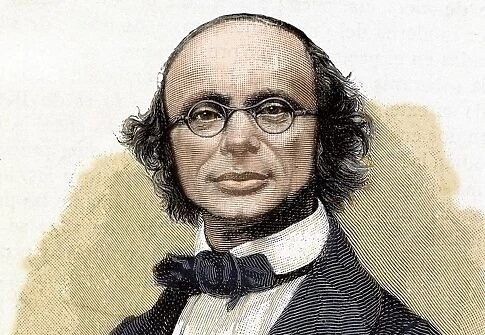Electrodynamics is the first name that comes to mind: Who is Wilhelm Eduard Weber?
Weber's name went down in history not only because of his pioneering research but also because of the combination of theoretical and practical thinking that led to the first method of electrical communication, which turned out to be of vital importance.

Wilhelm Eduard Weber was born on October 24, 1804 in Wittenberg. His family was into science; his father is a famous theology professor; and two of his brothers pursued careers in the natural sciences. Due to the Napoleonic Wars, the family had to leave Wittenberg and move to Saale; Weber studied here and became a professor. Let's not go without mentioning that his advisor is Johann Schweigger. He began working at the University of Göttingen in 1831, but his exposure to politics and protests against the decisions of "Ernest August I" was the end of his career.
Wilhelm Eduard Weber (24 October 1804 – 23 June 1891) was a German physicist and, together with Carl Friedrich Gauss, inventor of the first electromagnetic telegraph.
The University was not able to reopen its doors to him until the March Revolution of 1848. However, Weber did not stand still during the years in question. He took part in many projects and traveled, communicating with people such as Alexander von Humboldt and Carl Friedrich Gauss. Along with Gauss, Weber made the first electromagnetic telegraph in 1833. The device was towed between the physics institute and the magnetic observatory buildings. Communication was achieved using a code similar to the alphabet invented by Samuel Morse.
WEBER'S ELECTRODYNAMICS
After returning to university, Weber regained the opportunity to pursue further research in electrodynamics. It is worth mentioning the famous experiment conducted with Rudolf Kohlrausch, which showed the nature of light as an electromagnetic phenomenon, and whose results inspired the work of James Clark Maxwell. Weber was able to develop an innovative approach to electrodynamics; this is called Weber electrodynamics. As we know from history, although Maxwell's approach is more popular, Weber's equations continue to attract attention and are still studied today.
Wilhelm Weber has been awarded numerous awards and titles. He was awarded the British Copley Medal and the Prussian Order of the Pour le Merite. He was a member of the Royal Saxon Society of Sciences, the German Academy of Sciences, the Académie des Sciences in Paris, and the Russian Academy of Sciences in St. Petersburg. In addition, the University of Göttingen honors outstanding scientists in their fields with the Gauss-Weber Medal. The magnetic flux measurement unit is also named after him.
When we look at modern electronics, and especially its most common applications, we immediately encounter the issues of magnetism and electromagnetism. This includes not only electric motors (AC, DC, BLDC, etc.), but also actuators. The phenomenon Weber is working on is vital for surge protective devices and residual current devices; magnets and contactors are used for contactless switches, while relays work on the principle of electromagnetic attraction (relays, by the way, are made almost the same as telegraph receivers). But it is not limited to these. All wireless communication actually relies on electromagnetic waves, whether the result is Wi-Fi or Bluetooth, GSM, LTE, or even satellite GPS signals. The most ordinary cell phone today contains at least a dozen elements and components with which the name Wilhelm Weber is associated; Of course, these include speakers and microphones.
Weber's name went down in history not only because of his pioneering research but also because of the combination of theoretical and practical thinking that led to the first method of electrical communication, which turned out to be of vital importance.
